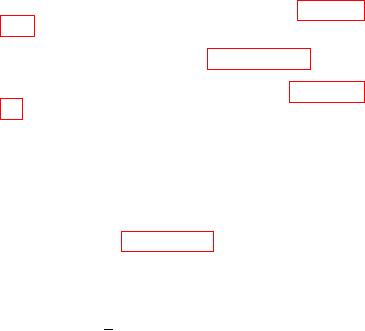
TM 1-1500-204-23-11
(2) Internal Bolted Patch. The internal bolted
this damage, drying of the part is required prior to
patch has the same eccentricity problems as the
external bolted patch. The internal bolted patch is
easier to fabricate than the internal bonded patch.
(2) Bolted Repairs. Bolted repairs are quicker
When backside access is not available, this patch is
and easier to fabricate than bonded repairs. They
split to allow installation through an elliptical or circular
are normally used on composite skins thicker than
cutout in the skin. Internal bolted patches may have
0.125 inch to ensure suficient fastener bearing area
interference problems with substructure members.
is available for load transfer. They have the potential
for moisture intrusion from the fastener holes and the
(3) External/Internal Bolted Patch. The use of
resulting core degradation. Bolted repairs are heavier
external/internal bolted patches of the same material
than comparable bonded repairs limiting their use on
and thickness eliminates eccentricity as the fasteners
weight sensitive light control surfaces.
are loaded in double shear. The eccentricity caused
by the offset of the external patch and part neutral
f. Scarf Repairs. These are the two types of scarf
axes is balanced by the eccentricity caused by the
repairs. Scarf repairs are typically used to repair
offset of the internal patch and part neutral axes.
laminates on highly-loaded structures. The size of
The load is shared by both patches on either side
the repair area depends on the thickness of the skin
of the repaired skin. This patch coniguration makes
and the required scarf ratio.
use of split backing plates to facilitate installation,
but has the disadvantage of possibly interfering with
(1) Partial Thickness Scarf Repair. Thicker
substructure members.
structures require larger patches relative to the orig-
inal damage area. Highly-loaded structures require
(4) Multiple Row Fastener Patterns. The rep-
high scarf ratios (e.g., 80 to 1), therefore, large patch
air of composite structures requires careful attention
areas in order to carry the necessary loads. As a
to design to prevent premature failure. Multiple row
result, patch areas may be very large. Scarf ratios
fastener patterns are required to gradually introduce
are determined according to the loads that must be
load from the part being repaired into the repair patch.
transferred. The scarf ratio for any repair in a given
It is virtually impossible to distribute the load evenly
weapon system will be called out in the system spe-
between all the fasteners in a multiple row pattern.
ciic technical manual or other authorizing document.
In general, the load in the fasteners increases with
Scarf repairs can be used on all glass, carbon, and
their distance from the center of the damage cleanup
aramid composite materials. Full thickness repairs
hole, with the load being the highest in the outer-
generally use scarf ratios of 20 to 1 while partial
most fasteners. The amount of load shared by the
depth scarf ratios are generally 30 to 1.
fasteners in the pattern can be increased by using
close tolerance fasteners and close tolerance fastener
(2) Full Thickness Scarf Repair. Full thickness
holes patterns. In addition, load sharing of fastener
scarf repairs are accomplished using the same pro-
can be increased by tapering or stepping the repair
cedures for a partial thickness repair per paragraph
patch. An improperly designed fastener pattern or
6-15f with the exception that a taper ratio of 20 to 1
tapered/stepped patch can result in premature fail-
is typical. Full thickness repairs may require installa-
ure of the repair. Only those fastener patterns and
tion of a backside seal (see paragraph 6-18e). Full
patches called out in either a system speciic technical
thickness repair may also be repaired by means of
manual or by engineering shall be used for repair.
bonded or bolted on scab patches. See paragraphs
7-6 and 7-7.
e. Bonded Versus Bolted Repairs. These are the
advantages and disadvantages of bonded and bolted
(3) Determining Scarf Dimensions. The fol-
repairs.
lowing steps are used to determine scarf dimensions.
Consult the system speciic technical manual or engi-
(1) Bonded Repairs. Bonded repair concepts
neering for scarf preparation details.
have found applicability in both types of manufacturing
assembly methods. They have the advantage of not
(a) Clean out the damaged area as outlined
introducing stress concentrations by drilling fastener
in paragraph 6-4b, Damage Removal.
holes for patch installation and can be stronger than
original part skin. They have the disadvantage of
(b) Determine the size of the scarf repair
using process sensitive materials that require special
using the following steps:
storage, handling and curing procedures. In addition,
Measure the cleaned up damaged
the presence of moisture can cause part damage
1
area (e.g., 2 inches in diameter).
during elevated temperature cure cycles. To preclude
6-30

